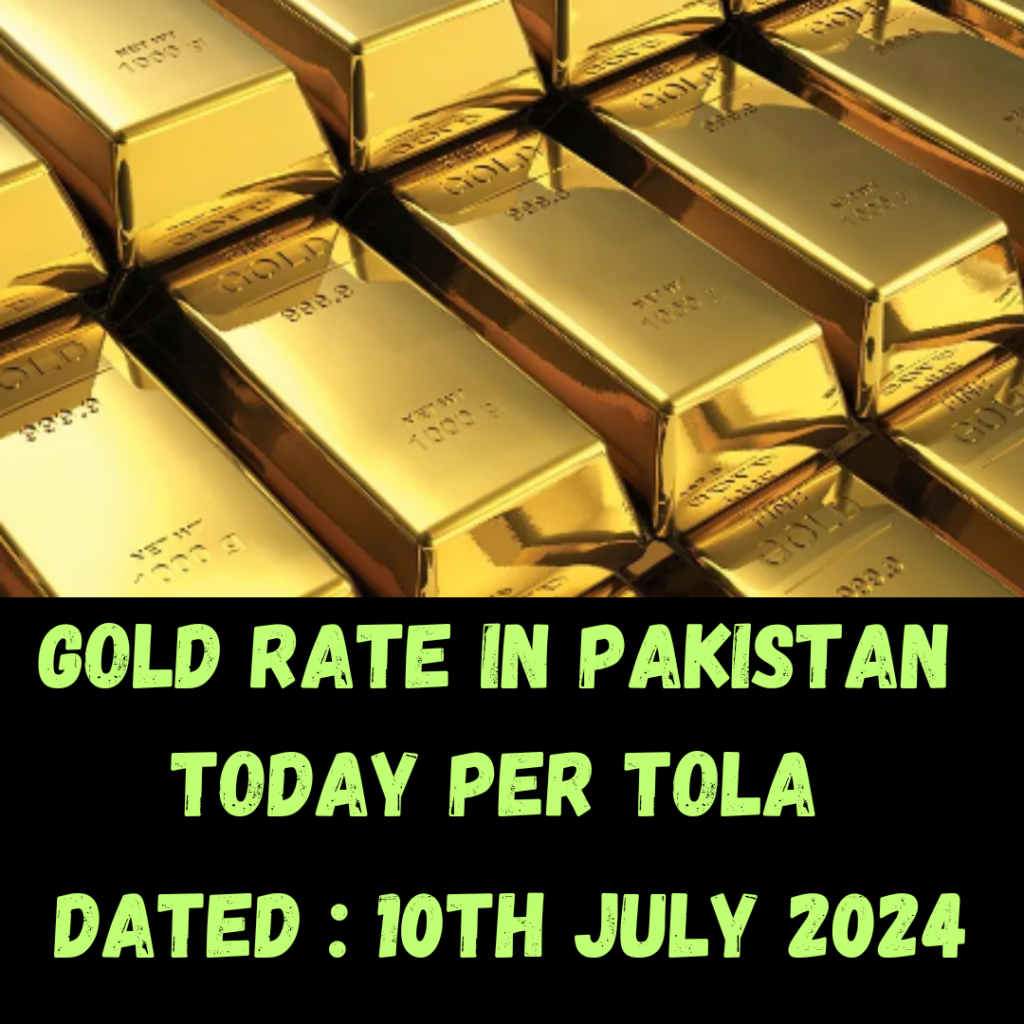Dated : Tue 10th July 2024,

Price on 10th July 2024:
Gold rate per tola is decreased consecutively for the 2nd Day . Now the Gold price per tola is 244,950Rs.
Yesterday the Gold price was 245,350Rs. It means that the Gold Rate per tola decreased by an amount worth 400Rs
Comparison of Price Changes :
| Date | Gold Price (PKR per tola) | Amount Decrease (PKR) | Percentage Decrease (%) |
|---|---|---|---|
| 9th July | 45,350 | – | – |
| 10th July | 44,950 | 400 | 0.88 |
For daily updates on Gold Price per tola Visit : Our Website
Source:
How the Gold Prices are determined – A general Guidance:
Gold prices are determined by a combination of factors that include supply and demand dynamics, market sentiment, geopolitical events, economic data, currency values, and actions of central banks and other major financial institutions. Here is a detailed breakdown of the factors influencing gold prices:
1. Supply and Demand
- Mining Production: The amount of gold mined each year affects its supply. A decrease in production can lead to higher prices.
- Jewelry and Industrial Demand: Gold is used in jewelry and various industrial applications. High demand in these sectors can push prices up.
- Investment Demand: Gold is a popular investment vehicle. Higher demand from investors can increase prices.
2. Market Sentiment
- Economic Uncertainty: During times of economic instability or recession, investors often turn to gold as a safe haven, increasing demand and prices.
- Inflation: Gold is seen as a hedge against inflation. When inflation is high, gold prices tend to rise.
3. Economic Data
- Interest Rates: Lower interest rates make gold more attractive as an investment because it does not yield interest. Conversely, higher interest rates can lead to lower gold prices.
- Currency Strength: Gold prices often have an inverse relationship with the value of major currencies like the US dollar. When the dollar weakens, gold prices usually rise.
4. Central Banks and Financial Institutions
- Gold Reserves: Central banks hold large quantities of gold. Their buying and selling activities can significantly impact gold prices.
- Monetary Policy: Actions by central banks, such as quantitative easing or tightening, influence gold prices by affecting inflation and currency values.
5. Market Speculation
- Futures and Derivatives Markets: Speculation in gold futures and other derivative markets can lead to price fluctuations.
- Investor Behavior: Large institutional investors and hedge funds can move gold prices through significant buy or sell orders.
6. Technological Advancements
- Extraction and Processing: Innovations in mining and processing technology can affect the cost of production and, consequently, the supply and price of gold.
- Alternative Investments: The rise of digital assets and other investment vehicles can influence investor preferences and impact gold demand.
7. Seasonal and Cultural Factors
- Festivals and Weddings: In countries like India, gold demand spikes during festivals and wedding seasons, affecting prices.
- Holidays: Demand for gold jewelry often increases during major holidays, leading to temporary price increases.
In summary, gold prices are influenced by a complex interplay of various global factors, making them subject to frequent fluctuations.



